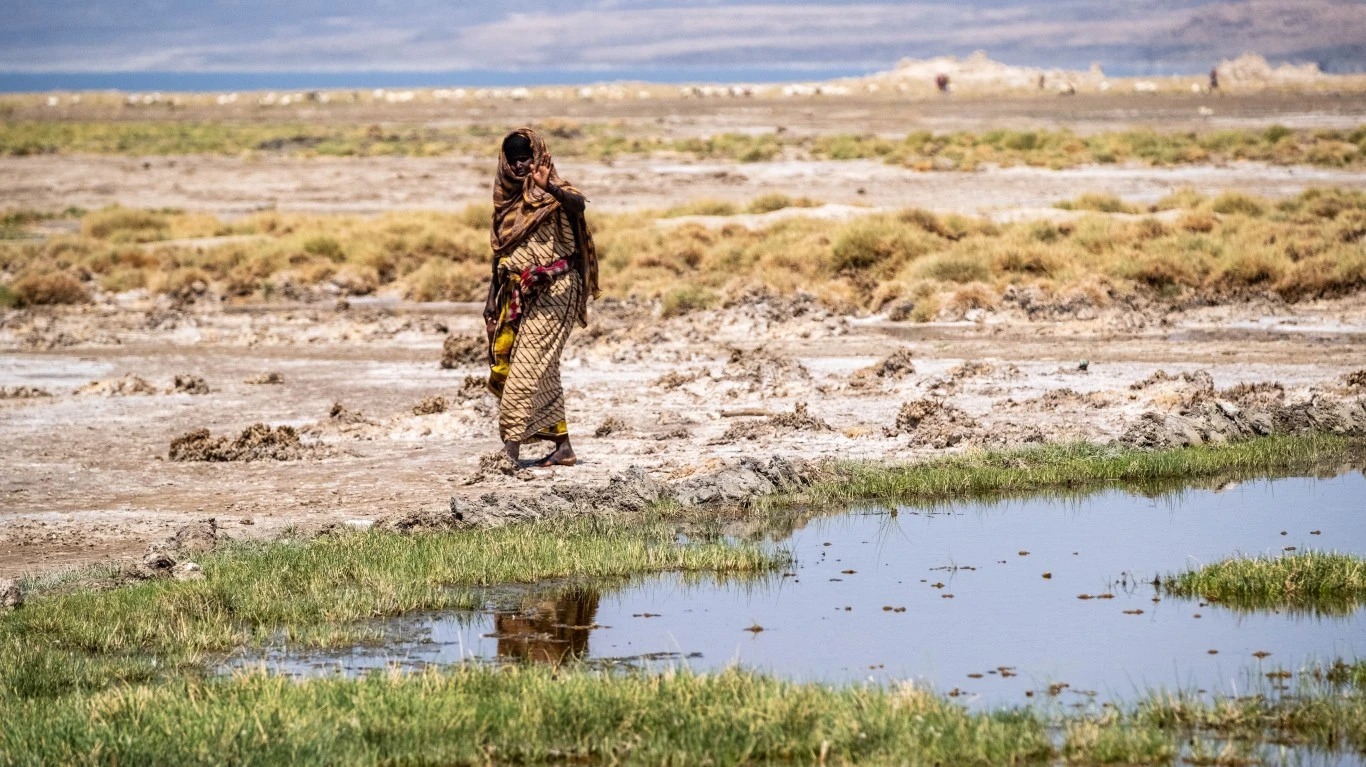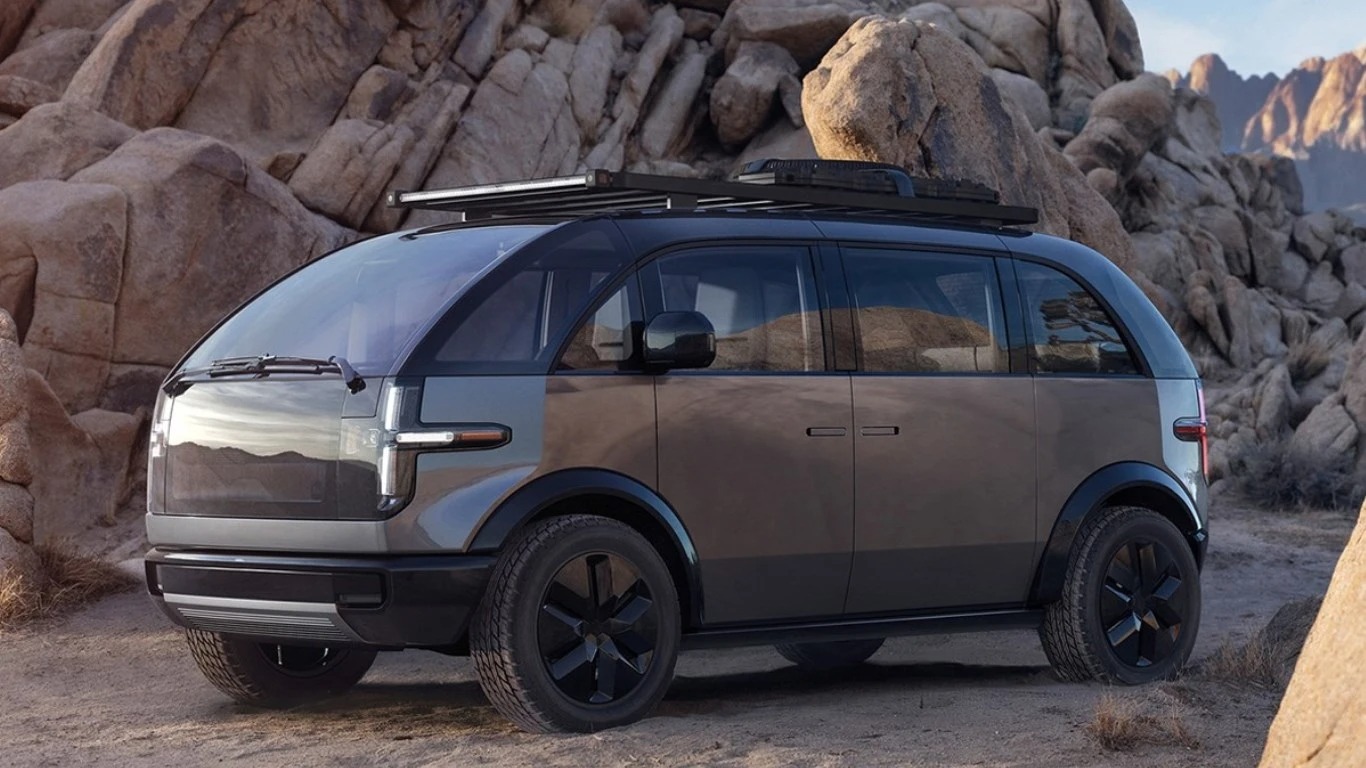President Joe Biden’s surprise pick of former Mastercard CEO Ajay Banga to run the World Bank portends a dramatic shakeup in climate financing for poorer nations to come and marks the second major climate advancement of the Biden presidency.
Following the early success of the Inflation Reduction Act in spurring billions in new climate investing in the U.S. last year, Banga’s appointment puts an Indian-American in charge of the institution responsible for economic reform in third-world countries. His background at Mastercard $MA , PepsiCo $PEP , Nestle and on several global policy committees such as the World Economic Forum puts a seasoned business leader with international experience in charge of the bank’s $86 billion lending portfolio.
Banga also has a unique relationship with Vice President Kamala Harris, having worked on immigration issues with her, which could come into play at some point for those looking for political intrigue. For now, and barring any surprise skeletons in his closet, he should be able to get through the month-long confirmation process and take over in time for the bank’s spring meetings in April in Washington.
Callaway Climate Insights put forth last week after current World Bank President David Malpass said he would resign that Biden could shake things up with a pick of an international banking presence from Asia, Africa or Latin America to showcase U.S commitment to helping poorer countries fight global warming. While we expected a banker from one of those regions, a business leader with both India and U.S. experience more than ticks the box for a major shakeup.
While other candidates may still emerge, the U.S. traditionally nominates the World Bank president, who is then confirmed by the bank’s board of executive directors. In placing Banga in front of them, Biden and team have set the stage for a new era of climate investment in poorer nations that is badly overdue.
Thursday’s subscriber-only insights
Lucid shares fall back to earth after earnings report
. . . . Lucid shares (LCID) tanked as much as 17% Thursday after the electric vehicle maker missed on revenue and said it only built 7,000 EVs last year, about a third of original estimates. It only delivered 4,000 of its vehicles, which feature the high-priced Lucid Air.
Lucid said it expects to build 10,000 to 14,000 EVs this year, though that is just a fraction of the more than 1.3 million Tesla cars built in 2022. The sell-off in shares continued a rollercoaster ride for Lucid investors this year after the stock popped 90% in late January on speculation that Saudi Arabia’s Public Investment Fund (PIF), which owns 62%, might take the company private.
If PIF ever had such intentions, no better time than now to follow through to capture a good price. Lucid Air EVs are highly prized in the auto community and the company has almost $5 billion in cash and revolving credit. It’s not big enough to go it alone but more than able to succeed under a bigger owner. Even at today’s price of between $8 and $9, it’s trading at almost four times cash.
This rollercoaster isn’t over yet. . . .
The head-scratching paradox within GOP attacks on the SEC
. . . . While Republicans bash so-called progressive climate policies, their states benefit from them most. On Wednesday, the chairman of the House Financial Services Committee, Patrick McHenry; the chairman of that panel’s Subcommittee on Oversight and Investigations, Bill Huizenga; and the ranking member of the Senate Committee on Banking, Housing and Urban Affairs, Tim Scott, sent a letter to SEC Chair Gary Gensler. In the missive, they demanded he provide more information about the SEC’s proposed rule on “The Enhancement and Standardization of Climate-Related Disclosures for Investors,” which is aimed at nudging public companies and funders into including climate and other considerations — often called environmental, social and governance, or ESG — in their financing and operations.
The move comes after the House of Representatives shifted from Democratic to Republican control in January and alongside the moves of several GOP governors, including Florida’s Ron DeSantis, to ban ESG considerations in apportionment decisions for their state’s investments.
Says the letter to Gensler: “Congress created the SEC to carry out the mission of protecting investors, maintaining fair, orderly, and efficient markets, and facilitating capital formation — not to advance progressive climate policies.”
In other words: ESG, bad; loosely regulated capitalism, good.
Except that it turns out that government efforts to combat global warming are disproportionately benefiting the red states whose political representatives are railing about “a climate agenda that is outside the scope of its mission and which will have significant economic and political consequences for the Nation and our capital markets.”
Consider, for example, Georgia, which is reveling in clean-energy investment for solar, electric vehicle and battery manufacturing, much of it spurred by incentives from Biden’s climate-focused Inflation Reduction Act. The Peach State’s experience is part of a pattern where Republican-leaning regions have claimed the lion’s share of new renewable energy and electric vehicle activity since the legislation, with GOP-held congressional districts hosting more than 80% of all utility scale wind or solar farms and battery projects currently in advanced development, according to an analysis by American Clean Power.
Why? Because companies are attracted by lower taxes, the generally lower wages paid in these states as well as a greater tendency to not unionize, factors that have long spurred auto companies and others to desert the northeast and the northern midwest.
The overall irony, though, is palpable, something pointed to by Biden when he talked about the IRA in his recent State of the Union speech. “My Republican friends who voted against it — I still get asked to fund the projects in those districts as well,” he said. “But don’t worry, I promised I’d be a president for all Americans. We’ll fund these projects and I’ll see you at the groundbreaking.”
Meanwhile, Biden no doubt hopes he may see some benefits at the ballot box.
Editor’s picks: Wild winter weather
Fire and ice across the U.S.
An unusually strong winter storm system is sweeping across the U.S. this week, bringing widespread power outages, blizzard conditions and treacherous ice accumulations. And, The Independent notes, the weather has been extreme, with temps ranging from 40 degrees below average in parts of the west and plains, to the first 100°F day of 2023 in Texas Wednesday. Nearly 1 million people were reportedly without power on Thursday morning. The National Weather Service warned of another storm system hitting California Thursday and Friday with blizzard conditions in the southern parts of the state and the Sierra. Also, heavy snow and ice from the Great Lakes to the northeast, and record-breaking high temperatures across the southeast.
Bill Gates: To fight climate change, improve global health
Climate change and global health are inextricably linked, writes Microsoft founder and philanthropist Bill Gates. “Hotter temperatures will make poverty reduction harder by increasing food insecurity and the prevalence of infectious diseases and diverting resources away from those who need them the most. It’s a vicious cycle. … To break the cycle, we need to make progress on both problems at the same time,” Gates said in an essay appearing both in the Times of India and on his blog, GatesNotes. Gates writes that he is going back to India next week, and he believes that the nation has made progress. He points to the work of researchers at the Indian Agricultural Research Institute as examples of collaboration and innovation that seek to meet both climate and health challenges.
Supergiant idea for a supervolcano
This research paper, titled Yellowstone Caldera Volcanic Power Generation Facility: A new engineering approach for harvesting emission-free green volcanic energy on a national scale, proposes “a safe means to draw up the mighty energy reserve of the Yellowstone Supervolcano from within the Earth, to superheat steam for spinning turbines at sufficient speed and on a sufficient scale, in order to power the entire USA.” According to the abstract, the project could solve the problems of producing energy to meet current and future needs of the entire nation, produce renewable energy that is emission-free and even “forestall the eruption of the Yellowstone Supervolcano.” Authors: Thomas F. Arciuolo, Ultimate Interfaces Corporation; and Miad Faezipour, Purdue University, School of Engineering Technology, Electrical and Computer Engineering Technology.
Words to live by . . . .
“While two systems of governance are engaged in a fight for global domination, our civilization is in danger of collapsing because of the inexorable advance of climate change.” — George Soros, speaking at the 2023 Munich Security Conference.
By David Callaway












